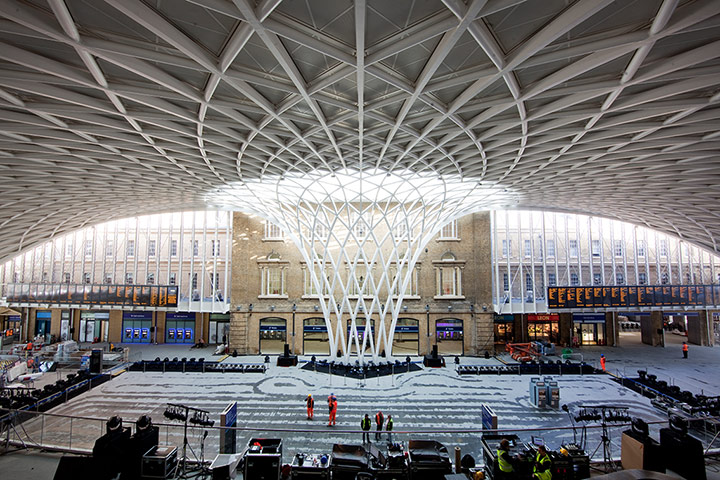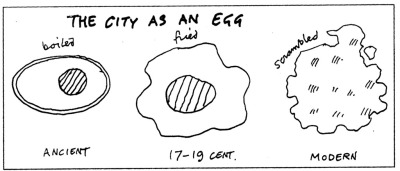"Thinking and therefore language arise from the interaction between a particular and a complex system, given biologically -- that is the human mind and the physical and social world" - Maria Bottero (quoting Noam Chomsky), "Questo numero," Zodiac 22 1973
Take a minute to pause from reading through this blog and think back to your clearest childhood memory.
Let your surroundings dissolve into the milky mnemonics of the past. Colors, sounds, smells, lights. Take it all in. What does it feel like to revisit this memory?
Go deeper into this moment and consider the textures that surrounded you; does the ground feel solid? or are you caught up in the ether of years gone by? Are you sitting or walking? Perhaps playing or gazing around? Take a few seconds to pause here. Given the senses you have draped around you, begin to imagine the emotions that you felt in this childhood moment. The joy, the wonder, the confusion, the curiosity, the closeness and brightness of things that you were then experiencing for the first time. Sense the electricity of the people around you and the position of your surroundings; can you feel the sun on your skin? Or perhaps the breath of some dear friend who joins you in this moment of introspection? Can you put a finger on that sense of place? If you can, take a tender hold of your memory and return with me back to our current setting. Back to this blog in the present day and let's carefully review where you've been.
For starters, appreciate the ability that you have to look back at your past. Can you still picture that original memory? Remembering where it took you in time and place, do you feel reconnected with your childhood because of the senses that the memory rekindled? Or perhaps are you reminded of events and experiences that trigger connections with what you felt when you were younger? And given these two systems-- the particular (your human experience) and the complex (the physical and social world) in what ways do you establish a narrative or memory? What language do you use to connect with the past? Is it a useful language-- that is, one that feels new and rekindles the emotions and sensations you originally experienced? Or perhaps was your trip down memory lane just that: nothing more than a black and white slideshow of a puerile past, valuable not for the emotions and experiences that the memory rekindled but simply for the sake of its age alone.
Granted, this is a bit of a heady method for diving into the topic of preservation, but I hope you were able to bear with this short exercise of looking backward. It is healthy, after all, to remember where we come from! My reasoning for this roundabout introduction is not to soften the blow defining conservation and preservation, but rather to establish a simple truth: Historic Preservation is a way of communicating and maintaining a link with the past. Most often this link is tied to the quantitative -- to buildings, relics, and items of antiquity that allow us to objectively look back at the day-to-day life of those who lived before us. But the art of Conservation lies in the qualitative -- it is not merely the scientific analysis of what has come and gone, but the interpretation of earlier times that allows us to see with wizened eyes the way that others lived in light of the way we live today.
Tying this argument back into Historic Preservation rhetoric let's consider the work of Alois Riegl, whose writings on the Modern Cult of Monuments (1928) established a way of valuing the past (read 'adding value to the present by considering how antiquity shapes our current way of living'). Riegl defines a 'historic monument' as any monument from a prior time which bears any 'tangible, visible, or audible work of man of artistic value.' Quite a broad range, to be sure! This general valuation can be subdivided into 'Artistic Value' and 'Historic Value' -- Riegl makes a sharp distinction that some monuments were created intentionally to serve as relics and vessels of past events and actions while others have survived the passage of time and come to us as unassuming, honest 'monuments,' historical in their own right but devoid of much of the value and pomp that can be attributed to monuments of deliberate commemoration.
To that same end, Riegl exposits that there is a commemorative dimension to monuments, both in age value and in historical value -- the former appreciative of age for age's sake and the latter for relevance to our present time (working to stop the progression of future decay or more boldly put 'immortality, an eternal present, an unceasing state of becoming' (pp 78).)
Our original exercise is now worth revisiting -- was your 'trip down memory lane' revisiting an early memory commemorative in nature? Probably not -- that is, as a child you probably didn't think to yourself 'let me remember this moment so that I can look back on it in future years and remember where I have come from'. Most likely your original memory is only valuable for age's sake alone. What's more, since your memory is intangible, it bears no connection as a 'monument' in Riegl's standard definition of the term as it is not visible, tangible, or audible. I hate to say it but the odds seem stacked against your memory for not possessing much by way of historical value! But fear not, countless men and women through time have experienced this same pang of longing that you (maybe) are feeling now for others to share in the emotions and value that you have for that original memory. And this leads us into the role that Historic Preservation plays in bringing value to the past-- preservation, more ably than most any other discipline, allows for the translation and interpretation of prior occurrences into a readily accessible and digestible piece of history that can be seen and ascribed to the present day with the hope of providing context for earlier actions and occurrences as well as relevance to contemporary critics and passers-by.
'How is this done?', you may ask. Great question. While Riegl suggest that it is only through a careful balance of Use Value (persistent usability of a monument through time), Newness Value (appearance as clean, unblemished, and pure despite the passage of time), and Historical Value (representative of contemporary perception for the past). Remember also that each of these value systems are predicated upon the fact that all value, whether qualitative or quantitative, is ascribed by the viewer. To that end, historic preservation is a professional interpretation of the objective, tangible relics of the past to be preserved with integrity to the subjective values of the present.
If all this seems a bit overwhelming, don't worry. Every object you see is, in fact, a monument to the time in which it was made and used. It is not so important that a preservationist over analyze every object for its potential cultural and historical value as a relic, but rather to focus on the tangible reminders from the past that build a stronger dialogue and channel of communication between the 'then' and the 'now' relating and reminding us where we were, where we are, and where we are going.
Works Cited
Imperiale, Alicia. "Organic Italy? The Troubling Case of Rinaldo Semino." Perspecta 43 TABOO The Yale Architectural Journal 43 (2011): 37. Print.
Riegl, Alois. "The Modern Cult of Monuments: Its Essence and Its Development." Readings in Conservation: Historical and Philosophical Issues in the Conservation of Cultural Heritage (n.d.): 69-83. Print.
















